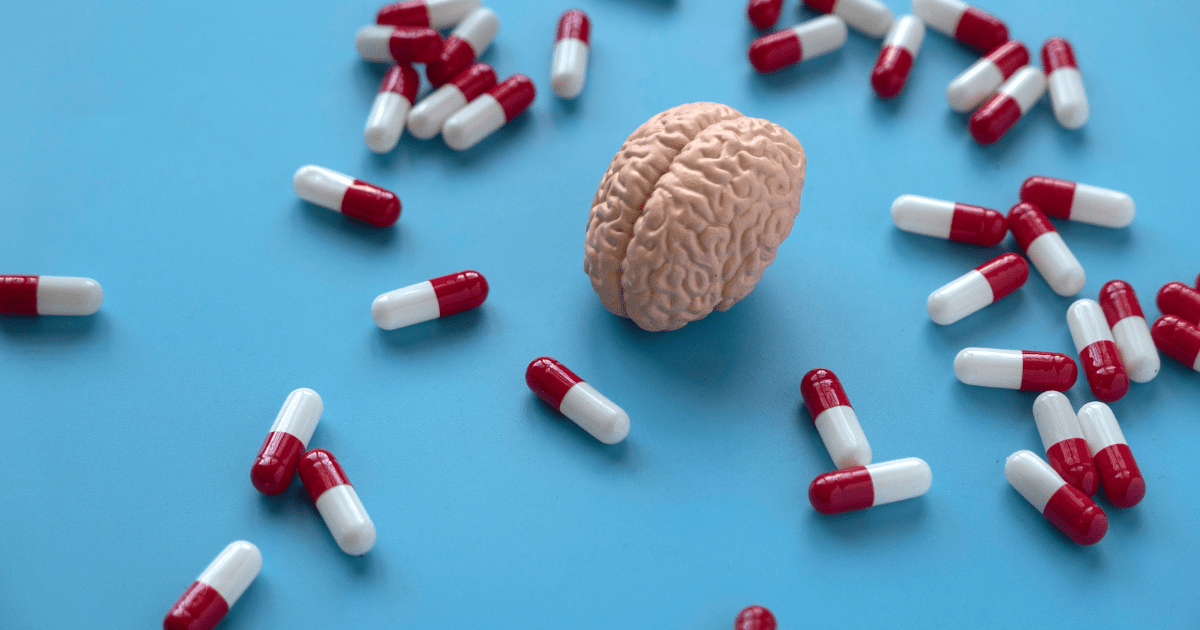
Why Effective Case Management is Essential for Successful Addiction Treatment
April 4, 2024
The Alarming Increase of Fentanyl Use: How First City Recovery Center Can Help
April 4, 2024Addiction is a complex and often misunderstood topic in today's society. Many people believe that addiction is simply a matter of willpower or personal choice, but the reality is far more nuanced than that. In this blog post, we'll delve into the science behind addiction and why it should be viewed as a disease rather than a simple decision.
Introduction to Addiction and the Controversy Surrounding it as a Disease or Choice
Addiction is a complex and often misunderstood concept that has been the subject of much debate in society. On one hand, there are those who view addiction as a disease, while others argue that it is simply a matter of personal choice. This controversy surrounding addiction has led to confusion and stigmatization for individuals struggling with substance abuse disorders.
At its core, addiction is defined as a chronic disorder characterized by compulsive drug seeking and use despite harmful consequences. It is considered a brain disease because it affects the structure and function of the brain, leading to changes in behavior and decision-making processes. These changes occur due to prolonged exposure to substances such as drugs or alcohol, which can alter the chemical balance in the brain.
However, some people believe that addiction is solely a result of poor choices or lack of willpower on the part of the individual. This perspective sees addiction as a moral failing rather than a medical condition. This belief has been fueled by societal attitudes towards substance abuse and often leads to blame and shame being placed on those struggling with addiction.
The controversy surrounding whether addiction should be viewed as a disease or choice has far-reaching implications for how society approaches treatment and support for individuals with substance use disorders. Those who view addiction as solely a choice may not see the need for medical intervention or support systems for those struggling with drug dependence.
On the other hand, viewing addiction as a disease acknowledges that it requires specialized treatment from healthcare professionals. It also emphasizes the importance of understanding underlying factors such as genetics, environment, and mental health issues that contribute to an individual's susceptibility to developing an addictive disorder.
Furthermore, considering addiction as a disease helps combat stigma by recognizing it as an illness rather than just bad behavior. It shifts focus from blaming individuals towards addressing systemic issues such as unequal access to healthcare resources and social determinants of health that contribute to substance abuse.
The controversy surrounding addiction as a disease or choice is a complex and ongoing debate. However, it is crucial to recognize that addiction is a multifaceted issue that requires a comprehensive understanding of its underlying causes and effective treatment approaches. Viewing addiction as solely a choice ignores the medical aspect of this disorder and perpetuates stigma towards those struggling with substance abuse. By understanding addiction as a chronic brain disease, we can work towards more compassionate and evidence-based solutions for individuals affected by this condition.
The science behind addiction: how drugs and alcohol affect the brain
The concept of addiction is often misunderstood and stigmatized in society. Many people view it as a moral failing or a lack of willpower, but the truth is that addiction is a complex brain disease that affects millions of individuals worldwide. In order to truly understand addiction, we must first look at the science behind it and how drugs and alcohol impact the brain.
When a person consumes drugs or alcohol, these substances enter the bloodstream and travel to the brain. They then interact with various neurotransmitters, which are chemical messengers responsible for communication between brain cells. One such neurotransmitter is dopamine, which plays a crucial role in the reward system of our brains.
Drugs and alcohol can release an excessive amount of dopamine in the brain, creating feelings of pleasure and euphoria. This flood of dopamine reinforces drug-seeking behavior and creates strong cravings for continued use. Over time, this constant release of dopamine can alter the brain's reward system, making it less sensitive to natural sources of pleasure like food or social interactions.
Furthermore, repeated use of drugs or alcohol can also lead to changes in other areas of the brain responsible for decision-making, judgment, and impulse control. These changes can make it difficult for individuals struggling with addiction to stop using even when they know it is harmful.
Additionally, certain substances can also cause physical changes in the brain's structure over time. For example, long-term alcohol consumption has been linked to decreased gray matter volume in regions associated with memory and learning. Similarly, chronic use of opiates can result in structural changes that affect emotional regulation and stress responses.
It is important to note that not everyone who uses drugs or alcohol will develop an addiction. The development of addiction depends on various factors such as genetics, environment, mental health conditions, and early exposure to substances during critical periods of brain development.
While initial drug or alcohol use may be voluntary for most individuals; continued use ultimately alters their brains, making it a chronic disease that requires ongoing management and treatment. By understanding the science behind addiction and how drugs and alcohol affect the brain, we can begin to see it as a medical condition rather than a moral failing. This shift in perspective is crucial in reducing stigma and providing effective support for individuals struggling with addiction.
Factors that contribute to addiction: genetics, environment, and mental health
Addiction is a complex and chronic disease that affects individuals from all walks of life. It has been estimated that approximately 10% of the world's population struggles with some form of addiction, making it a prevalent issue in society. While many factors can contribute to the development of an addiction, three key elements stand out: genetics, environment, and mental health.
Genetics play a significant role in determining an individual's susceptibility to addiction. Studies have shown that children of parents with substance use disorders are up to eight times more likely to develop an addiction themselves compared to those without a family history. This is due to inherited genetic variations that affect brain chemistry and increase the chances of developing addictive behaviors. For instance, individuals may inherit genes that make them more sensitive to the effects of drugs or alcohol, leading to increased pleasure-seeking behaviors and reinforcing substance use.
The environment also plays a crucial role in shaping an individual's risk for addiction. Factors such as peer pressure, societal norms, access to drugs or alcohol, and exposure to trauma can all contribute to the development of addictive behaviors. Children who grow up in homes where substance abuse is prevalent are at a higher risk of developing addictions themselves as they are exposed early on to drug or alcohol use as a coping mechanism.
Another critical factor contributing to addiction is an individual's mental health status. Individuals with underlying mental health conditions such as depression, anxiety, bipolar disorder, or post-traumatic stress disorder (PTSD) are more vulnerable to developing addictions than those without these conditions. This correlation between mental health disorders and addiction is often referred to as dual diagnosis or co-occurring disorders. Many individuals turn towards substances as a way to self-medicate their symptoms and manage their emotions temporarily.
Moreover, repeated substance use can also lead to changes in brain structure and function over time. Addiction alters the reward system in the brain; therefore causing individuals' dependence on substances for feelings of pleasure, motivation, and reward. As the brain becomes accustomed to this altered state, it craves more of the substance, making it challenging to stop using even when faced with adverse consequences.
Addiction is a multifaceted disease influenced by a combination of genetic predispositions, environmental factors, and mental health conditions. Understanding these contributing factors can help individuals recognize their risk for developing an addiction and take preventative measures to avoid falling into its grip. It also emphasizes the importance of addressing underlying mental health issues in addition to treating addiction itself for long-term recovery success.
Understanding the cycle of addiction: tolerance, dependence, and withdrawal
Addiction is a complex disease that affects millions of people worldwide. It is characterized by compulsive drug seeking and use, despite harmful consequences. Many factors contribute to the development of addiction, including genetic, environmental, and behavioral influences. However, understanding the cycle of addiction is crucial in comprehending why it's considered a disease rather than a choice.
The cycle of addiction begins with tolerance – the body's natural response to repeated exposure to drugs or alcohol. Tolerance occurs when the brain adapts to the substance and requires larger amounts to achieve the desired effect. This means that over time, individuals will need more of the substance to experience the same high they initially felt. As tolerance increases, so does drug use, leading to an increased risk of dependence.
Dependence is a state in which an individual relies on a drug or alcohol to function normally. As tolerance continues to build up and more significant amounts of substances are used regularly, dependence becomes stronger. At this point, individuals may experience intense cravings for drugs or alcohol and have difficulty controlling their consumption.
As dependence strengthens, withdrawal symptoms may occur when drug use is reduced or discontinued abruptly. Withdrawal symptoms can be physical and psychological and can range from mild discomforts such as nausea and headaches to severe symptoms like seizures and hallucinations. These symptoms often lead people back into substance abuse as they seek relief from their discomfort.
The vicious cycle continues as individuals must continue using drugs or alcohol simply not to feel sick due to withdrawal symptoms caused by their dependence on these substances. This pattern perpetuates addiction until it becomes all-consuming – taking up most aspects of an individual's life.
It's vital to understand that addiction involves both physical changes in brain function as well as psychological components such as cravings and behaviors associated with obtaining drugs or alcohol. The combination leads many experts in recognizing it as a chronic disease rather than just poor decision-making.
Understanding the cycle of addiction – tolerance, dependence, and withdrawal – is crucial in recognizing the complexity of this disease. It's not a simple matter of willpower or choice but rather a result of changes in brain function and behavior that require extensive treatment and support to overcome. By educating ourselves on the cycle of addiction, we can better understand why it's considered a disease and offer empathy and support to those struggling with it.






